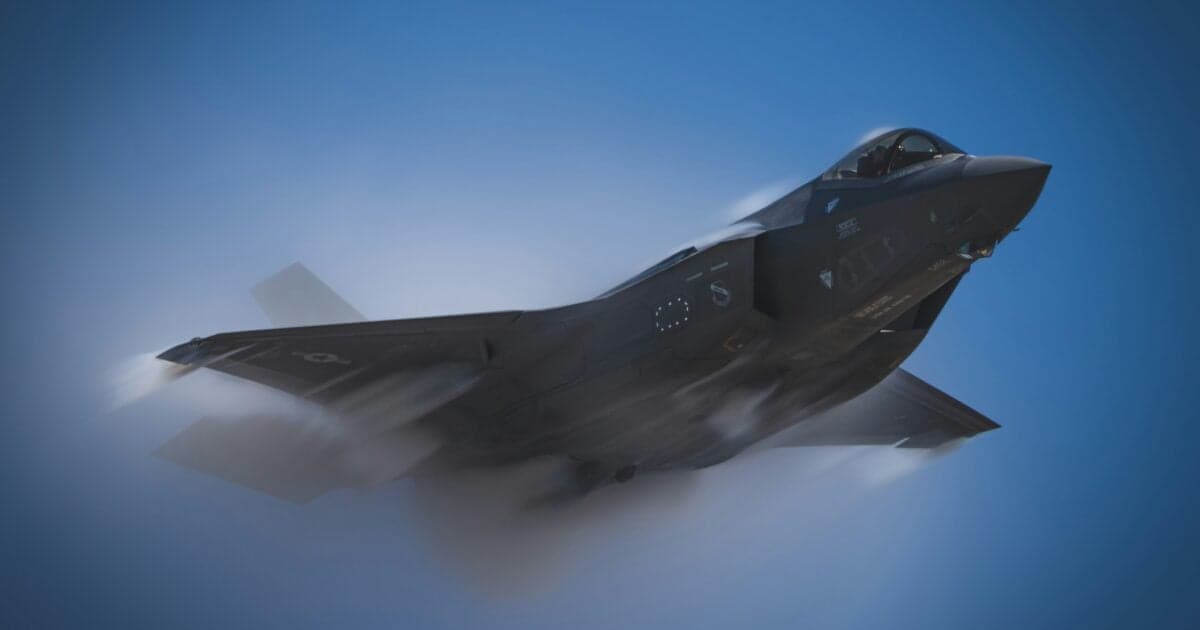Lucid's (LCID) Stock Price Gets a Boost From Uber Technologies (UBER)... But What's Next?

For years, Uber Technologies (UBER) has flirted with an autonomous-vehicle ("AV") future. The company's experience in this space has been bumpy – even deadly.
But it appears a new chapter is underway...
Last Thursday, the ride‑hailing giant announced it will pour $300 million into luxury electric-vehicle ("EV") maker Lucid (LCID).
Private robotics company Nuro will outfit the vehicles with self-driving technology. Together, these companies plan to unleash a fleet of premium robotaxis, starting next year.
Source: Uber
This milestone deal bundles a luxury EV... a proven autonomous system... and one of the largest mobility brands in the world.
It's a bold bet that robotaxis can move from science fiction to a real, bill‑paying business.
But will that gamble pay off for these companies... and their shareholders?
The Deal and the Players: Uber, Lucid, and Nuro
Uber's announcement lays out a multipronged deal to launch a fleet of autonomous-SUV robotaxis...
Over the next six years, the ride-hailing giant says it will acquire and deploy more than 20,000 of Lucid's upcoming Gravity SUVs.
The Gravity is a luxury electric SUV. It has room for seven adults, can handle a range of 450 square miles, and includes an array of features for passenger comfort. And it's customized with layers of redundant safety systems – think extra steering, braking, and onboard sensors.
Nuro will supply the software and hardware to make these luxury vehicles drive themselves. Uber's Gravity fleet is expected to reach Level 4 automation – able to drive without human input in most conditions. That's just one step below full automation...
Source: American Center for Mobility
Uber is offering a separate cash infusion to Nuro as part of the deal. (Lucid, meanwhile, used the announcement to slip in news of a 1-for-10 reverse split... a blunt reminder of its operating losses. More on that below.)
Strategically, the trio will get exactly what each company is missing now:
- Uber gets thousands of premium EVs and a new "Lux Autonomous" fare tier.
- Lucid gets a reliable buyer to keep its factories running.
- Nuro lands a marquee customer that can feed it tons of real-world miles and data.
Let's take a closer look at what each company needs to get this right...
Uber Outsources Self-Driving Technology
Uber's first move into self-driving cars ended in tragedy – and retreat.
In 2018, one of its test vehicles struck and killed a pedestrian in Arizona. It was the first known fatality involving a fully autonomous car. The incident triggered a wave of lawsuits, regulatory blowback, and soul-searching for the company.
By 2020, Uber had seen enough. It offloaded its Advanced Technologies Group to self-driving company Aurora (AUR). Uber kept a 26% stake in Aurora, but otherwise showed it would no longer go it alone on self-driving technology.
Since then, CEO Dara Khosrowshahi has rebuilt Uber's AV strategy around partnerships...
In addition to Aurora and Lucid, Uber also partners with Alphabet-backed Waymo to offer driverless rides in Austin, Texas. Last month, that service expanded to Atlanta, Georgia.
This new approach is a return to Uber's classic asset-light playbook. Uber can avoid the research and development costs of new technology... while collecting a healthy cut on every ride.
In short, let someone else build the EVs and code the AV brain. Uber will bring the riders.
The deal also gives Uber two strategic boosts: redundancy and leverage.
By working with multiple AV partners, Uber doesn't get locked into any single vendor's technology or pricing. It can negotiate better terms, expand to more markets faster, and cherry-pick the best-performing systems.
The Lucid Stock News: Turnaround or Trouble?
Lucid, a California-based EV startup founded with a former Tesla engineer, made waves in 2021 with its debut EV sedan – the Lucid Air.
The car boasted jaw-dropping specs: more than 1,000 horsepower, more than 500 miles of range, and a price tag north of $160,000.
But four years later, Lucid has yet to gain real traction.
The company delivered just 9,000 cars last year. And it expects 20,000 this year (a fraction of Tesla's 1.8 million output in 2024). Lucid has also averaged $2 billion in operating losses over the past three years, with no sign of being able to hit growth targets.
The Uber deal could change all that – if Lucid plays its cards right.
Supplying 20,000 Gravity SUVs to Uber might not sound like much, especially over six years. But it amounts to about 15% of Lucid's annual production based on current run rates.
In other words, it's enough volume to help keep Lucid's factories running – especially if retail demand for luxury EVs remains soft.
The market sees the potential. Lucid's stock soared on the news, closing Thursday up 36% over the previous day's close.
But Lucid may find itself in a difficult balancing act.
Uber generally prefers to stretch its investment with cheaper cars. But Lucid has spent years building a high-end reputation – with six-figure sedans, minimalist interiors, and marketing that emphasizes craftsmanship, innovation, and exclusivity. Think Bentley, not budget.
Seeing Lucid EVs ferrying Uber passengers around a major city like Las Vegas or Miami might hurt the company's image.
Interim CEO Marc Winterhoff says the company will badge its fleet vehicles differently, but the brand could still take a hit from its association with Uber.
If Lucid threads the needle, the upside is significant. The deal gives Lucid predictable revenue, lots of data from high-mileage use cases, and a potential launchpad to sell into other fleet markets. We could see Lucid delivery vans, Lucid airport shuttles... maybe even government contracts.
But if it keeps losing money and consumer sales continue to disappoint, Lucid risks becoming a glorified manufacturer for someone else's platform.
Going into robotaxis might save this company – or it might cement Lucid's shift from a coveted luxury brand into a white-label vendor.
Nuro Moves From Delivery Robots to Software
In the late 2010s, Nuro was one of Silicon Valley's darlings in the self-driving space...
Nuro's pint-sized robots, built to carry groceries and takeout orders, promised a future of contactless commerce. Folks loved its toaster-shaped delivery pods. It was valued at $5 billion.
Source: Nuro
But by 2023, that vision hit a wall. Nuro laid off 30% of its staff, paused production on its latest bot, and pulled back from direct fleet operations. Running vehicles, it turns out, is hard – and expensive.
So Nuro pivoted. Instead of building its own robots, it began selling the "brains" behind them.
Enter Nuro Driver – a modular autonomy system that includes sensors, software, and remote operations tools, all designed to integrate with third-party vehicles.
The Uber-Lucid deal is Nuro's first big test case – and a chance to prove that the pivot works.
Here's what Nuro brings to the table:
- A technology package that includes dozens of sensors – cameras, radar, and lidar – plus extra braking systems, so the vehicle can safely navigate even if one system fails.
- A cloud-operations platform that lets one remote operator oversee up to 20 vehicles, improving efficiency and lowering costs.
- Deep regulatory experience, thanks to years of operating in Arizona, Texas, and Nevada with grocery partners like Kroger and Walmart.
In exchange, Nuro enjoys an asset-light business. Instead of spending capital on vehicles and depots, Nuro can earn per-mile software fees and licensing revenue. The more robotaxis Uber launches, the better Nuro's margins get.
But challenges remain. Retrofitting a Lucid SUV is a big leap from piloting a delivery bot...
These are passenger vehicles. They have higher speeds, stricter safety standards, and much fussier customers. HVAC systems, ride quality, emergency handling – all these things matter now. That's a level of complexity Nuro hasn't tackled at scale.
Still, with more than $2 billion raised to date and a fresh $106 million extension round closed this spring, Nuro has the runway to see this new business model play out.
The Uber partnership doesn't just validate Nuro's pivot – it may also be the blueprint for its survival.
Are Uber Robotaxis Around the Corner? Headwinds to Watch
As thrilling as the Uber–Lucid–Nuro announcement sounds, investors might want to pause for a second look.
Just last week, analysts at HSBC warned that the robotaxi market has been "widely overestimated."
Their latest model suggests that AVs could need seven to eight years of heavy service just to break even on a cash-flow basis. This is due to often-overlooked costs – like cleaning, vehicle depots, remote operators, and rising insurance premiums.
Technical hurdles haven't disappeared, either. Some of the hardest problems in autonomy remain shockingly mundane... Left turns across oncoming traffic, pedestrians darting into the street, and construction zones still confuse even the best AVs.
Then there's the labor and political blowback. Uber's more than 7 million drivers aren't likely to cheer a technology that threatens their peak-hour earnings. Expect city councils and state lawmakers to demand per-mile AV fees, or to limit fleet sizes outright.
And let's not forget the hardware bill. Lucid reportedly loses tens of thousands of dollars per car sold today. Adding autonomous sensors and redundancy systems won't make the cars any cheaper.
So, yes – Uber and its partners are building something real. But for robotaxis to work, they don't just need to drive themselves. They need to drive profits – consistently and at scale.
That road still looks long.
Two Self-Driving Car Stocks That Could Beat Lucid
If you're excited by the potential of robotaxis, or AVs more generally, there are other – possibly better – options out there.
One is Mobileye (MBLY). As Stansberry Innovations Report editor John Engel highlighted in a recent issue, this developer of advanced driver-assistance systems ("ADAS") is sitting on a more than $17 billion design-win pipeline.
That's thanks to its SuperVision and Chauffeur autonomy technology stacks. These modular systems – already embedded in cars from BMW, Geely, and Polestar Automotive – allow carmakers to scale from assisted driving to full self-driving over time. And Mobileye's hardware and HD mapping platform are already in more than 200 million vehicles worldwide.
Then there's Alphabet (GOOGL). As Whitney Tilson recently reminded readers in his daily newsletter, Google's parent company owns Waymo, the most advanced AV operator in the U.S., with a live fleet of more than 1,500 robotaxis across five cities.
Waymo may not show up on Alphabet's income statement yet, but Whitney views it as a "free call option" – one that could be worth anywhere from $45 billion to $150 billion if spun out or monetized more directly.
(Whitney's newsletter comes with a recommendation for air-taxi company Joby Aviation (JOBY) to boot!)
What makes these two companies compelling is that they don't need robotaxis to be profitable tomorrow. Mobileye earns from ADAS systems already shipping today. Alphabet still prints cash from ads and cloud computing. Autonomy is a bonus.
Of course, these remain long-duration bets with real volatility. Position sizing and patience are key. But if driverless tech succeeds, these companies are built to profit from every mile.
Good investing,
John Robertson






